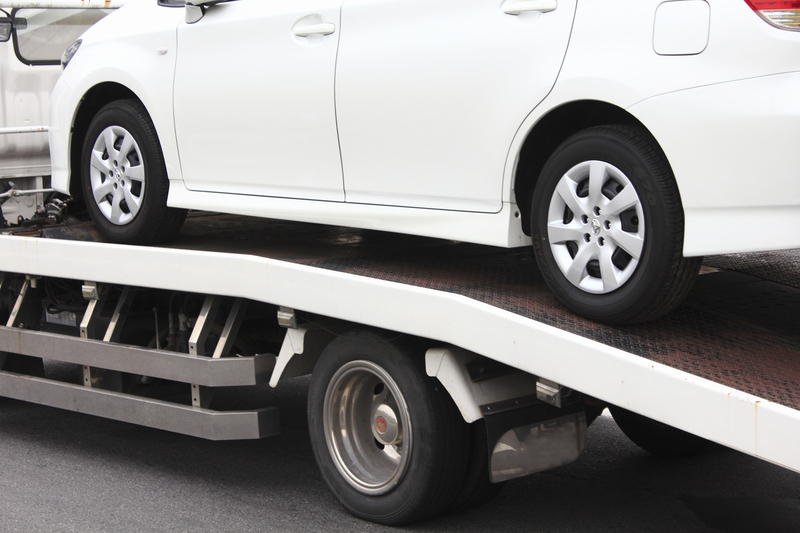A Stepwise Method to Prepping and Storing Your Freezer Properly
Are you looking to maximize your freezer storage, reduce food waste, and extend the shelf life of your groceries? Proper freezer preparation and storage are essential for maintaining the quality, safety, and efficiency of your frozen foods. This in-depth guide on prepping and storing your freezer properly provides a step-by-step approach that ensures your freezer works optimally and your food lasts longer. Whether you are new to freezer organization or have been freezing food for years, this article will answer all your questions and help you master the art of freezer management.
Why Is Proper Freezer Preparation and Storage Important?
Many people overlook the benefits of a properly organized and maintained freezer. However, freezer organization goes far beyond simply stacking items haphazardly. With the right method, you can:
- Prevent food waste by keeping track of what you have
- Preserve food freshness and nutritional value
- Save money by buying in bulk and freezing portions
- Enhance food safety by avoiding spoilage and freezer burns
- Improve kitchen efficiency and meal planning
Let's dive into a comprehensive, step-by-step method to prepping and storing your freezer properly!

Step 1: Clean and Prepare Your Freezer Space
1.1. Unplug and Empty the Freezer
Before you can effectively organize your freezer, it's important to start with a clean slate. Unplug your appliance and remove all contents. This is also an excellent opportunity to review what's inside and discard any old, freezer-burned, or expired items.
- Transfer perishable foods to a cooler with ice packs to keep them cold.
- Sort through everything and dispose of unidentifiable or outdated items.
1.2. Defrost and Deep Clean
If you have a frost buildup, now is the time to defrost your freezer. Place old towels around the base to soak up water. Once thawed, wipe down all surfaces with a mixture of warm water and mild detergent. For odors, mix in a little baking soda. Allow the freezer to dry completely before plugging it back in.
1.3. Organize Tools and Supplies
Prepare the following items to help with the organization process:
- Freezer-safe containers (plastic or glass)
- Freezer bags
- Permanent markers or freezer-safe labels
- Storage bins or baskets
- Inventory sheet or freezer app
Having these supplies ready will make the next steps easier and more efficient.
Step 2: Categorize and Portion Your Food for Freezing
2.1. Group Foods by Type
Categorization is a critical part of freezer prepping. By grouping similar items together, you can easily locate what you need and reduce the time spent with the freezer door open. Common categories include:
- Vegetables and Fruits
- Meats and Poultry
- Seafood
- Baked Goods
- Pre-cooked meals or leftovers
- Ice cream or desserts
- Stocks, sauces, and soups
2.2. Portion Food for Easy Meals
Separate large quantities of food into meal-sized portions before storing them in the freezer. This will make thawing and meal preparation much simpler. Use sturdy freezer-safe bags or containers and remove as much air as possible before sealing to minimize freezer burn.
2.3. Label Everything
Proper labeling is one of the most overlooked yet essential steps in freezer storage. Always include the name of the item, portion size, and freezing date. This helps you track how long something has been in the freezer and prevents mysterious, unidentifiable packages from piling up.
- Use a permanent marker or freezer labels.
- Place labels where they're easy to see.
2.4. Consider Pre-Freezing
Certain foods--like berries or cut produce--benefit from being individually frozen on a tray before transferring them to a bag or container. This helps avoid clumping and makes it easy to only grab what you need.
Step 3: Organize Food in the Freezer
3.1. Follow a Freezer Layout
Designate specific zones or sections within your freezer for each food category. Upright and chest freezers may have different optimal setups, but you can use baskets, bins, or shelf dividers to create dedicated spaces.
- Top shelf: Ready-to-eat items & pre-cooked meals
- Middle shelves: Meats, fish, and poultry
- Lower shelves/bottom: Staples like bread or bulk items
3.2. Store Items Flat and Stackable
Whenever possible, store bags and containers flat until frozen, then stack them. This maximizes your available space and makes it easier to shift things around.
- Lay freezer bags flat until the contents are solid.
- Use stackable containers for soups, stews, and sauces.
3.3. Implement the First-In, First-Out (FIFO) System
Arranging your freezer so that older items are in front or on top (and newer additions go to the back or bottom) is the best way to ensure nothing is forgotten and minimizes food waste. Make it a habit to rotate items every time you add new things to the freezer.
Step 4: Maintain an Organized Freezer
4.1. Keep an Inventory
Maintaining a freezer inventory will help you stay on top of what you have and what you need to use up. You can:
- Use a simple notepad, an inventory sheet posted on the freezer door, or a freezer organization app.
- Log the quantity, dates, and categories of items.
- Update the list each time you add or remove items.
4.2. Perform Monthly Checkups
Once a month, take a few minutes to check the contents of your freezer. Remove any items approaching the end of their freezer life and plan meals around them. Wipe down surfaces as needed and reorganize for maximum efficiency.
4.3. Set Ideal Freezer Temperature
Set your freezer temperature to 0?F (-18?C) or lower. This is optimal for long-term freezer storage, minimizing the risk of spoilage and maintaining food quality.
4.4. Handle Power Outages Properly
In the event of a power outage, keep the freezer door closed as much as possible. A full freezer can maintain its temperature for up to 48 hours; half-full, it lasts about 24 hours. Consider adding bags of ice or frozen water bottles if you foresee an outage.
Step 5: Best Practices for Freezer Storage
5.1. Use the Best Freezer Storage Materials
Not all containers or bags are freezer-friendly. For optimal results:
- Use thick, quality freezer bags with zip seals
- Choose rigid, airtight plastic or glass containers
- Opt for containers with minimal dead space to prevent ice crystals
5.2. Avoid Freezer Burn
Freezer burn happens when food is exposed to air, causing dehydration and off-flavors. To minimize this:
- Remove as much air as possible from bags or containers
- Double-wrap items such as meat or baked goods
- Don't overcrowd your freezer, which restricts airflow
5.3. Freeze Fresh Food While It's Still Good
For the best flavor and texture, freeze items while fresh. Waiting until they're close to spoiling won't improve quality once frozen. Proper prepping and storing your freezer properly means thinking ahead!
5.4. Don't Overload Your Freezer
While a full freezer is more energy-efficient, avoid stuffing it to the point where air can't circulate. Allow some space between items for optimal freezing and retrieval.
5.5. Know the Storage Times for Different Foods
Not all foods hold up in the freezer for the same length of time. Here are some general guidelines:
- Bread and baked goods: 2-3 months
- Fish and seafood: 3-6 months
- Chicken and turkey: 9-12 months
- Beef, lamb, and pork: 6-12 months
- Vegetables and fruit: 8-12 months
- Soups and stews: 2-3 months
Mark everything with dates, and try to use items within the recommended timeframes for best quality.

Troubleshooting Common Freezer Issues
Frost Buildup
- Make sure your freezer door seals tightly
- Avoid storing hot food inside
- Regularly defrost manual-defrost freezers
Strange Odors
- Use an open box of baking soda to neutralize smells
- Clean spills and leaks promptly
Difficulty Finding Items
- Re-organize often and update your inventory sheet
- Consider using clear storage bins for visibility
Conclusion: Master Prepping and Storing Your Freezer Properly
Implementing a stepwise method to prepping and storing your freezer properly will dramatically simplify your kitchen life, reduce wasted food, and save you money and time. Clean and prepare your freezer regularly, portion and label everything, maintain a systematic organization, and follow best storage practices for optimal results.
When your freezer is thoughtfully organized and properly maintained, you'll always know what you have, make meal planning easier, and enjoy fresher, higher-quality food year-round.
Start today by reviewing the contents of your freezer, cleaning it out, and establishing a plan for long-term freezer success! With this comprehensive, stepwise approach, prepping and storing your freezer properly has never been easier or more rewarding.
- Have any freezer hacks or storage tips? Share them in the comments below!



